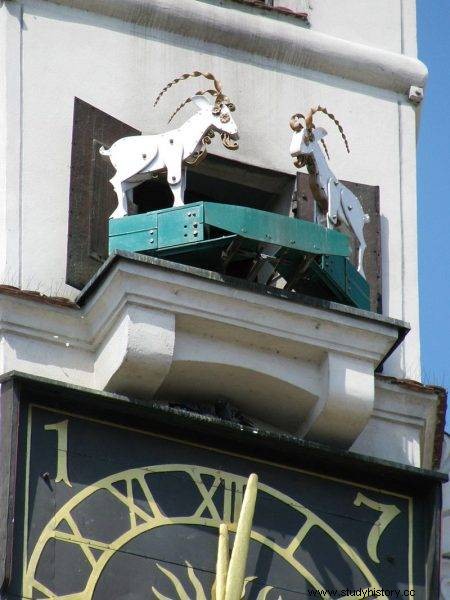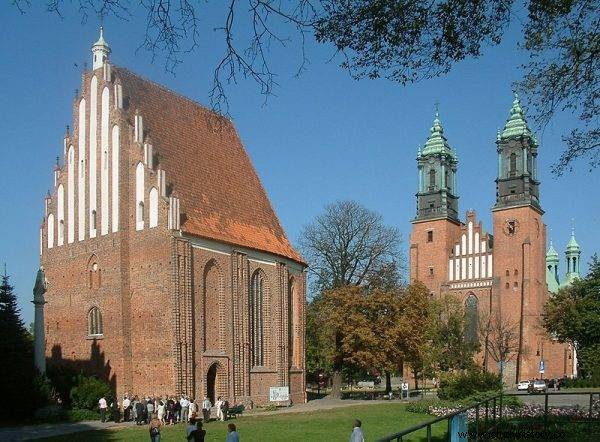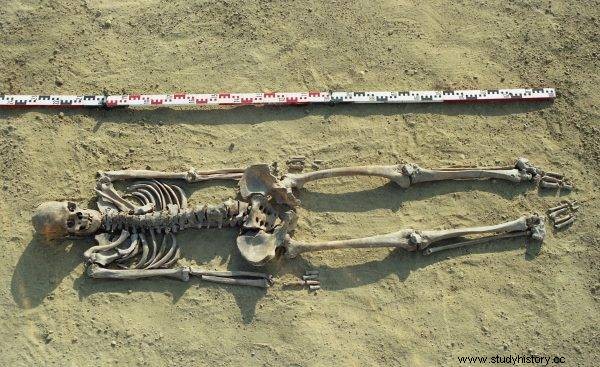Holidays in the city? They don't have to be boring! Poznań should not be missing on the summer travel map of young history lovers! What is worth seeing in and around the city? We have prepared a few interesting facts for you, about which you can read the book "Cuba on the trail" by Kuba and Filip Majewski. You can't miss them!
Billy goats
One of the most visited places in Poznań is the Old Market Square. A place that is usually crowded, famous for its fountains, builders' houses and of course - gossiping billy goats. This is exactly for the goats, which we can always see at 12:00 pm, the biggest crowd gathers.
Where did the billy goats on the town hall tower come from? According to legend, after the fire in Poznań and the reconstruction of the town hall, eminent guests were invited to celebrate this event. The young cook Pietrek, responsible for the roast that was to be served at the feast, burned it. To avoid punishment, the boy went to a nearby meadow, from where he grabbed two billy goats.

Poznań billy goats
It was unfortunate that these, feeling what was going to happen to them, escaped from under the knife. To make matters worse, the billy goats ran up onto the tower's cornice, and then began to ... burst with horns in front of the gathered people . What happened to the little cook Pietrek and the gossiping goats? See for yourself by visiting the Poznań market square or reading the book "Kuba na tropie" by Kuba and Filip Majewski.
Pillory
This quite mysterious word, associated with a tongue twister, actually means a high column on which stands the figure of a knight with a sword. And although it would seem to be just another monument in the city reminding you of someone important, it is not this time.
The pillory was used, in short, to inflict various kinds of punishment. The offenders were tied by the hands and flogged or stigmatized in public. It took place in the place where this column stands, and the knight visible above is actually the executioner . The funds for the torture site were obtained in a rather specific way. You can read about it in the book "Cuba on the trail":
Imagine that it was built with money from fines, or tickets for servants and vendors. What did they do? They wore clothes that were too fancy.

The text was created, among others based on the book by Filip and Kuba Majewski "Kuba na tropie", which has just been released by the Bellona publishing house.
In fact, beautiful cloths and rich ornaments were reserved only for the upper class. It was very easy to get a fine for distinctive attire, light decorations or even too many folds on the dress.
Devil's Stone
When visiting Ostrów Tumski, the oldest district of the city, it is impossible not to notice the Church of the Blessed Virgin Mary. This is where Cuba takes us, and it is inseparably connected with the story of ... the devil's stone.

Church of the Blessed Virgin Mary in Poznań
According to legend, at the behest of Lucifer, the devils were to destroy the church. They had worked hard all night, but the building was intact. In the morning, a few of the faithful noticed strange marks on the wall that were supposed to be left by sinister devils .
It was believed that the damaged stone had magical powers. Since then, the building has become an important point for tourists visiting the city.
Interestingly, in fact, the "devil's" marks are traces of ... swords that knights sharpened before setting off on an expedition. They believed it would bring good luck and save them from death.
Convict Cemetery
Near Ostrów Tumski, we come across a cemetery in Śródka. The cemetery was established in the times of Mieszko I. The then inhabitants and warriors of the prince were buried there. So where did the term "convicts' cemetery" come from?
In fact, the convicts who broke the law established by Mieszko I were buried there. During excavations, often dismembered body parts were found, and one of the brutal punishments of the Piast times was the cutting of the right arm for theft.
In addition, there is a medical mystery from the Middle Ages associated with this place. Was it possible to do brain surgery in those days?
Ostrów Lednicki and the giant
The book "Cuba on the trail" could not miss a visit to Ostrów Lednicki. It is a unique place located about 40 kilometers from Poznań. Unique because it is an island - and it is the largest of the five located on Lake Lednica.
The place bears the hallmarks of history, as evidenced by archaeological research and found artifacts. Probably this is where the baptism of Poland took place.

Who was the medieval "giant" from Ostrów Lednicki?
But that's not the only attraction at this place. The remains of a medieval giant were found here - a woman who was 215 cm tall (the average height of a woman was then 153 cm). It is known that she was cared for, as evidenced by the healed fractures. Nevertheless, she certainly stood out in the society of that time. So how was a person of such height treated in the Middle Ages and why was he buried in an unusual way?
In addition to the listed attractions that are worth seeing when visiting Poznań and its surroundings, in the book "Cuba on the trail" you will find a whole lot of mysterious places and amazing legends. You will also learn many interesting facts related to the city and concerning, for example, medieval weapons. The book can be a great guide for young history buffs looking for adventure, treasures and puzzles!
